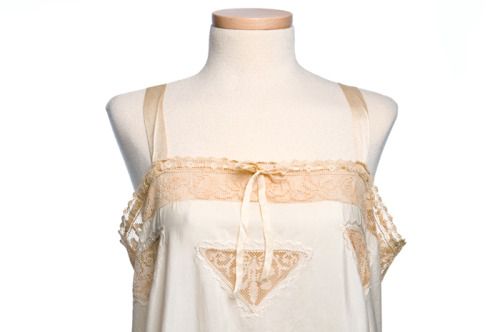charlestonmuseum:Undergarments of the 1920s were dramatically different from previous decades &nda
charlestonmuseum: Undergarments of the 1920s were dramatically different from previous decades – less cumbersome, less restrictive (depending on your physique), lighter and more colorful. Many of these newer garments were made of silk (satin, pongee, shantung and crepe de chine) as well as a new synthetic fiber called artificial silk (renamed rayon in 1924). Because the dresses were shorter and less fitted, the slip could be short and tubular or with pleats or gathers at each hip. The teddy was a popular garment, also known as a step-in-combination, being a combination of the chemise and drawers. And the brassiere or bandeau was designed to minimize the breasts, giving a flat-chested, boyish silhouette.Our examples of these three undergarments all came from the wedding ensemble or trousseau of Mary Sinkler deSaussure of Charleston who married John Lynch McQueen on April 16, 1925. The matching slip and teddy are of ivory china silk with lace insertion and silk embroidery. The slip has gathers at the low waistline and a drawstring through the top lace. This teddy has a stitched crotch, though many had snaps or buttons. Both of these were made by Estelle McQueen McDowell, John’s sister, using lace he brought back from service in France during World War I.The brassiere is of cream satin with a pink satin rose in the center. The edges are faced with cotton binding tape and the shoulder straps are of satin ribbon. It closes in the back with hooks and eyes and has an elastic extension. On the elastic is the printed label: “610 X Boyshform / Bando 30.” While it is not a severely restrictive flattener, this little bra offers very little room for a curvaceous figure. Boyshform began in 1919 with W. E. Pruzan as its president. He launched a nationwide advertising campaign to establish his trade name as synonymous with a “flat boy-like” silhouette. He actually took credit for inventing the flattened-breast look. His company was forced into reorganization in 1925 and filed for bankruptcy in 1928. -- source link
Tumblr Blog : charlestonmuseum-deactivated201.tumblr.com






